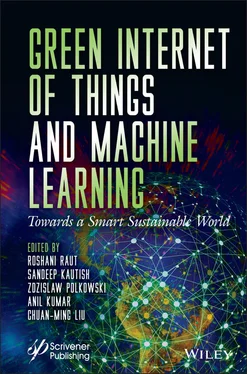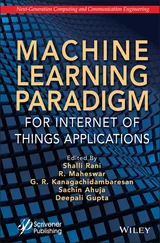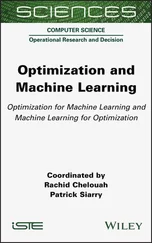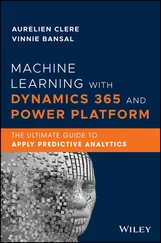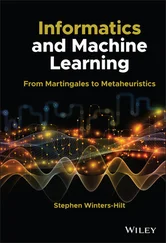Green Internet of Things and Machine Learning
Здесь есть возможность читать онлайн «Green Internet of Things and Machine Learning» — ознакомительный отрывок электронной книги совершенно бесплатно, а после прочтения отрывка купить полную версию. В некоторых случаях можно слушать аудио, скачать через торрент в формате fb2 и присутствует краткое содержание. Жанр: unrecognised, на английском языке. Описание произведения, (предисловие) а так же отзывы посетителей доступны на портале библиотеки ЛибКат.
- Название:Green Internet of Things and Machine Learning
- Автор:
- Жанр:
- Год:неизвестен
- ISBN:нет данных
- Рейтинг книги:3 / 5. Голосов: 1
-
Избранное:Добавить в избранное
- Отзывы:
-
Ваша оценка:
- 60
- 1
- 2
- 3
- 4
- 5
Green Internet of Things and Machine Learning: краткое содержание, описание и аннотация
Предлагаем к чтению аннотацию, описание, краткое содержание или предисловие (зависит от того, что написал сам автор книги «Green Internet of Things and Machine Learning»). Если вы не нашли необходимую информацию о книге — напишите в комментариях, мы постараемся отыскать её.
Encapsulates different case studies where green-IOT and machine learning can be used for making significant progress towards improvising the quality of life and sustainable environment. Green Internet of Things and Machine Learning
Green Internet of Things and Machine Learning — читать онлайн ознакомительный отрывок
Ниже представлен текст книги, разбитый по страницам. Система сохранения места последней прочитанной страницы, позволяет с удобством читать онлайн бесплатно книгу «Green Internet of Things and Machine Learning», без необходимости каждый раз заново искать на чём Вы остановились. Поставьте закладку, и сможете в любой момент перейти на страницу, на которой закончили чтение.
Интервал:
Закладка:
– Chapter 11discusses the use of the G-IoT and ML in the banking industry. It provides an overview as to how banking institutions are making use of the G-IoT and its life cycle. Also, it focuses on the use of AI and ML in the banking industry, along with scrutinizing their important role in the banking sector, and identifies the latest technologies which can be adopted for reducing carbon footprints with the IoT.
– Chapter 12presents the G-IoT technologies and the future challenges they face. The IoT appends everything in the smart world. Consequently, the utilization of IoT advancements in applications has become an energized area of research. Enlivened by achieving low power consumption using the IoT, a green IoT is proposed. This chapter fundamentally discusses the existing procedure of the G-IoT, which contains green development, green reprocessing, green execution, and green improvement. A study is presented that analyzes the principles of the G-IoT, and plots the pivotal energy of the G-IoT and its structure.
Machine learning and deep learning, along with the developments in the IoT, are accelerating the value of different applications, thereby increasing the prospects for boosting operational effectiveness and productivity. However, security and scalability still need to be achieved for many processes, goods, and services since many of the devices remain susceptible to malicious acts due to a lack of end-to-end security solutions. Nonetheless, ML-enabled IoT devices have faster, flexible, high-performance networks that connect a wide variety of devices that provide numerous functions and applications to the end user.
The Editors
November 2021
1
G-IoT and ML for Smart Computing
Karunendra Verma1*, Vineet Raj Singh Kushwah2 and Nilesh3
1Chitkara University School of Engineering & Technology, Chitkara University, Himachal Pradesh, India
2Department of Computer Science & Engineering, IPSCTM, Gwalior, M.P., India
3Department of Computer Science & Engineering, Rama University, Kanpur, U.P., India
Abstract
Today’s life is going to be easy with the use of various devices. Mostly, devices are based on various Machine Learning (ML) techniques, which is one of the most thrilling technologies of Artificial Intelligence (AI). If such devices are operated by internet, then this will increase the efficiency and effectiveness of the working and such type of technology is based on Internet of Thing (IoT). Every web search like Bing or Google is used to search on the internet using these techniques and retrieved results, efficient and accurate in short span of time as they used such learning algorithms to rank the web pages. Like every time, Facebook is used to identify the friends’ photo that is also ML. Product recommendation, online fraud detection, online customer support, videos surveillance, healthcare industries, face recognition, email spam, and malware are also based on various learning algorithms. The objective of this article is to give the brief introduction of various AI, ML, and IoT-based techniques with their applications in real life. Article also included the various aspect of Green IoT (G-IoT) which is based on utilization of IoT with environment friendly.
Keywords:Artificial intelligence, IoT, G-IoT, machine learning, deep learning, supervised learning, unsupervised learning
1.1 Introduction
Artificial Intelligence (AI) refers to the system where machines are given AI and such machines are called intelligent agents. These days AI is growing to be popular due to their features. It is simulating the natural intelligence in machines that are performing the mimic and learn actions of humans. These agents are able to learn with knowledge and carry out human-like work. As AI is continued to grow, they are having a big impact on our worth of life [1].
AI is also defined as follows:
• An intelligent agent shaped by humans.
• Capable to perform tasks intelligently without human interventions.
• Able to think and act sensibly as human.
1.2 Machine Learning
When a machine gains the capability to learn from practices and experience rather than just by preset instructions is called Machine Learning (ML). It is the subset of AI. ML algorithms produce results and improve their own results on the basis of past experiences. It produces the desired output by modifying its own produced output according to available datasets and implicitly comparing the current outcome to the final output [2].
1.2.1 Difference Between Artificial Intelligence and Machine Learning
In a general sense, AI and ML are much the same, but the fact is ML is the subset of AI as depicted in Table 1.1[3].
1.2.2 Types of Machine Learning
• Supervised learning
• Unsupervised learning
• Semi-supervised learning
• Reinforcement learning
Figure 1.1depicts the various types of machine learning techniques.
Table 1.1 Difference between AI and machine learning.
| Artificial Intelligence | Machine learning |
| AI enables the machines to behave or simulate like humans. | ML permits a machine to learn from available past data without giving instructions to it explicitly. |
| AI is used to make such systems which can solve complex problems like humans. | ML goal is to make a machine to be trained itself from historical data without any human intervention. |
| AI has ML and DL as subset. | ML has DL as subset. |
| Following three types of AI: general AI, strong AI, and weak AI. | Following four types of ML: semi-supervised, unsupervised, reinforcement, and Supervised learning. |
| AI focuses to maximize the chance of success. | Machine learning focuses on accuracy and patterns. |
| AI uses structured, unstructured data, and semi-structured. | ML uses structured and semistructured data only. |
1.2.2.1 Supervised Learning
In the supervised ML, a machine learns from past data and then produces the desired output [4]. A machine gets its training from already available dataset using appropriate algorithms and inferred function. This inferred function predicts the output and gives an approximate desired result. The used labeled data set helps the algorithm to understand the data and produce the labeled output for more accurate results [5]. Figure 1.2shows the complete process of supervised learning.
The following are some algorithms which are based on supervised learning:
• Linear Regression
• Naive Bayes
• Nearest Neighbor
• Neural Networks
• Decision Trees
• Support Vector Machines (SVM)
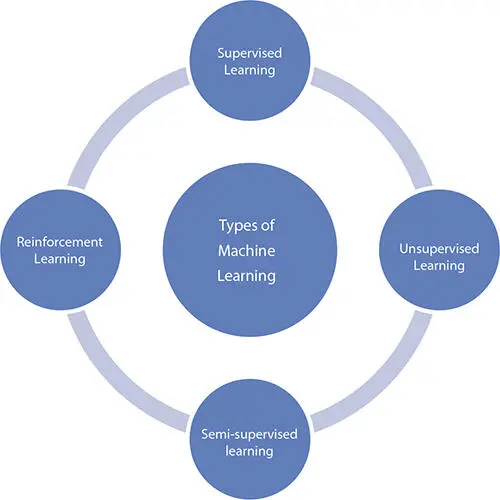
Figure 1.1 Classification of machine learning.
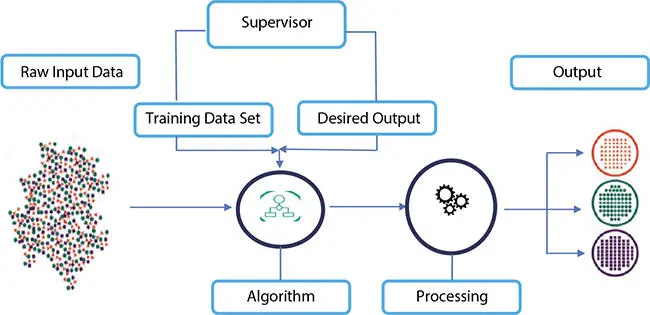
Figure 1.2 Process of supervised learning.
1.2.2.2 Unsupervised Learning
When a machine learns from unlabeled data or it discovers the input pattern itself, it is known as unsupervised learning. It divides the learning data into diverse clusters. Therefore, this learning is known as clustering algorithm. In this learning, the training data will not be labeled and inferences functions create its own inferences by exploring the unlabeled dataset in order to find suitable patterns [6]. Figure 1.3shows the complete process of unsupervised learning.
Читать дальшеИнтервал:
Закладка:
Похожие книги на «Green Internet of Things and Machine Learning»
Представляем Вашему вниманию похожие книги на «Green Internet of Things and Machine Learning» списком для выбора. Мы отобрали схожую по названию и смыслу литературу в надежде предоставить читателям больше вариантов отыскать новые, интересные, ещё непрочитанные произведения.
Обсуждение, отзывы о книге «Green Internet of Things and Machine Learning» и просто собственные мнения читателей. Оставьте ваши комментарии, напишите, что Вы думаете о произведении, его смысле или главных героях. Укажите что конкретно понравилось, а что нет, и почему Вы так считаете.
